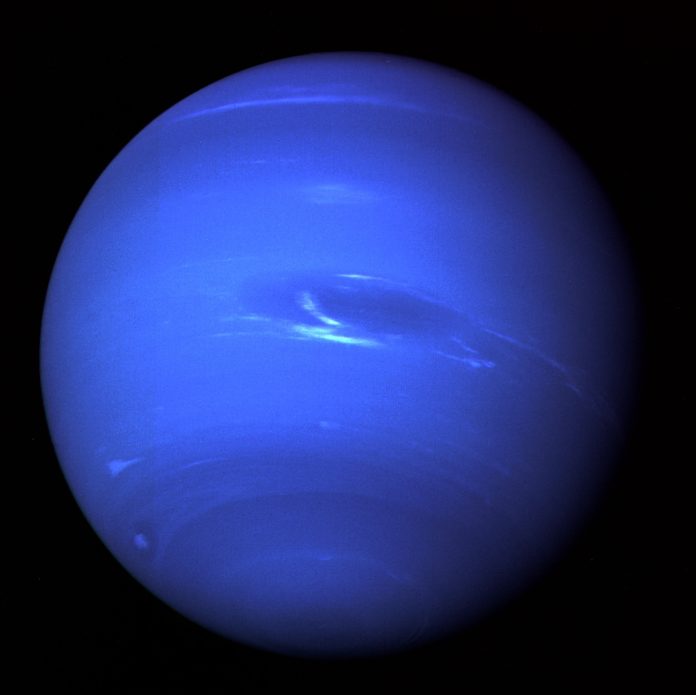Researchers over at the Helmholtz-Zentrum Dresden-Rossendorf (HZDR) have successfully demonstrated the formation of diamond showers in the ice giant we call Neptune. The team used the strong X-ray laser among other equipment at the Stanford Linear Accelerator Center (SLAC) to simulate conditions of the core of cosmic giants. This is the first time ever the fission of hydrocarbon and the conversion of carbon into diamonds in real time has been observed.
The core of planets such as Neptune or Uranus is made up of thick layers of ice that consist mainly of hydrocarbons, water, and ammonia. Astrophysicists have believed for a long time that extreme pressure lurking under the surface of these planets splits the hydrocarbons, creating diamonds as a result. It’s an exciting observation for the team. “In our experiment, we exposed a special kind of plastic – polystyrene, which also consists of a mix of carbon and hydrogen – to conditions similar to those inside Neptune or Uranus,” said Dominik Kraus, head of a Helmholtz Junior Research Group at HZDR.
This was done by driving two shock waves through the samples using a very powerful optical laser until the plastic compressed. The first smaller, slower wave is overtaken by another stronger second wave,” says Kraus. “Most diamonds from the moment both waves overlap.” Snapshots were taken of the diamonds forming and the chemical processes involved through the use of ultrafast X-ray diffraction.
From the results of the study, the researchers have concluded that the diamonds on Neptune and Uranus are much larger and therefore likely to sink down to the core over a long period of time.
“Our experiments are also providing us with better insights into the structure of exoplanets,” confirms Kraus confidently. And, for their part, these chemical processes inside the planet tell us something about its vital properties. This allows us to improve planetary models.” As well as these insights, the experiments show potential for use in future applications.
For example, once treated, nano diamonds could be used in consumer electronics, medical devices, or used as a cutting device in production. At the moment, producing such diamonds requires blasting. Producing diamonds by laser could be much cleaner and much more controlled.
More News to Read
- Researchers Make a Breakthrough in Neutrino Behavior
- The Medical Implications Weightlessness Has on our Astronauts
- Researchers Discover Lonely Microbes Have Higher rate of Antibiotic Resistance
- Are Nanodiamonds the Answer to Safer Batteries?
- Scientist Identified a Portion of the Brain that Intensified the Desire For Cocaine

